A few animals in the game + a scenery / theme idea that the devs might like.
This is a long post, bear with me.
Animals
Here's a few animals that would fit rather well in the game. I don't think they're anything like the ones that have been shown so far, they're pretty distinct. They're also almost all endangered, critically endangered, or even extinct in the wild. Most of them are not-Savannah biome, since we've already been spoiled with a few of those. I've included the general habitat of the animals for the developers, so that they might see that these are some fine possible additions to the game that aren't "just more Savannah animals".
I've added some additional info for each species, informative but also some bad references and jokes.
Ranked in terms of endangered-level:
Extinct in the Wild (EW)
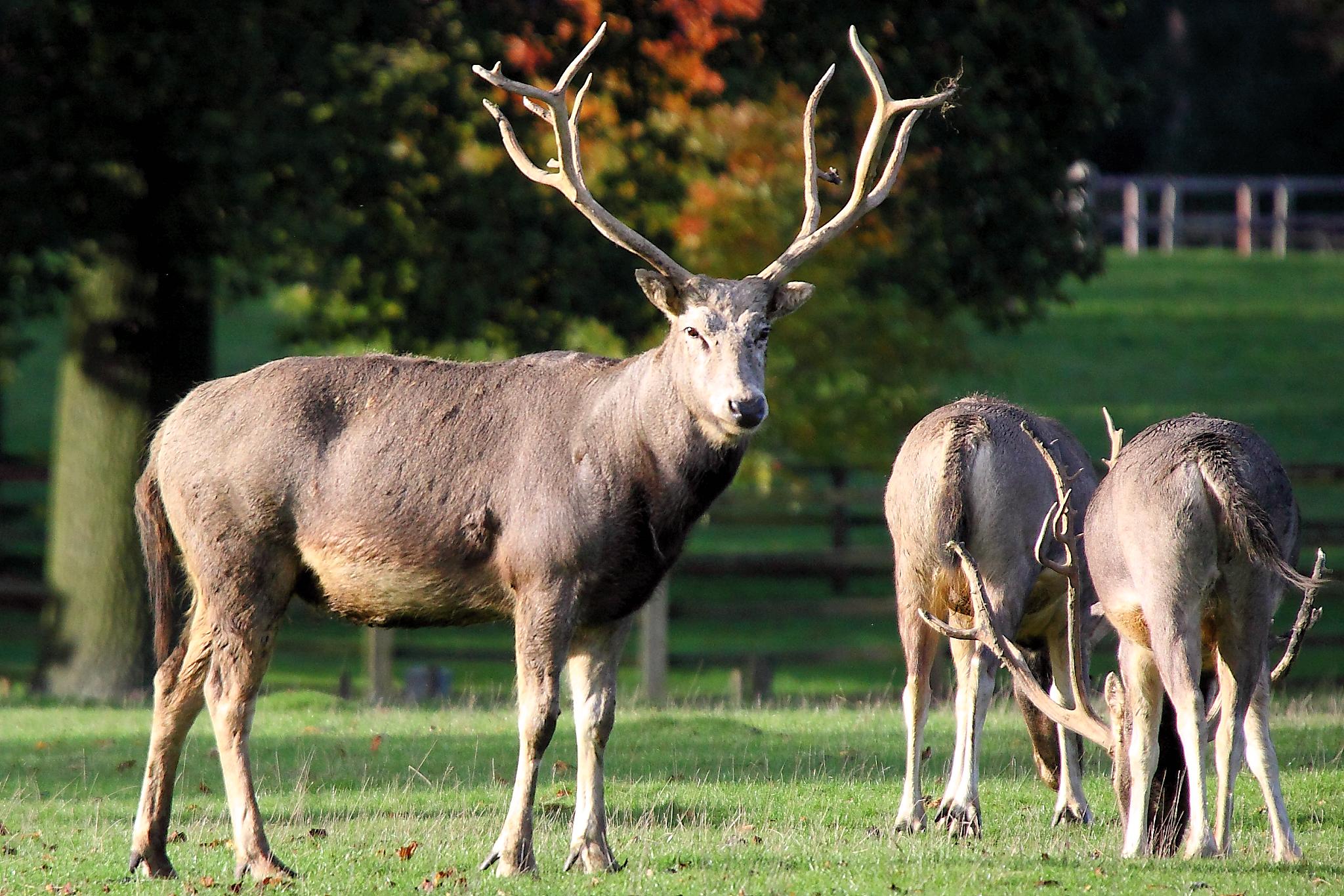
Since the game so far lacks some antlered creatures (though we have horned ones). These are creatures that used to live in the river valleys of China, went extinct due to hunting and land reclamation in 1939. The 11th Duke of Bedford acquired a few of the last deer from European zoos for a private herd at his home. The great-grand child of the Duke reintroduced two herds to China. Also three (3!!) creatures from the Berlin Zoo created the current population of 5000. Current wild population in China is now back to over several thousands.
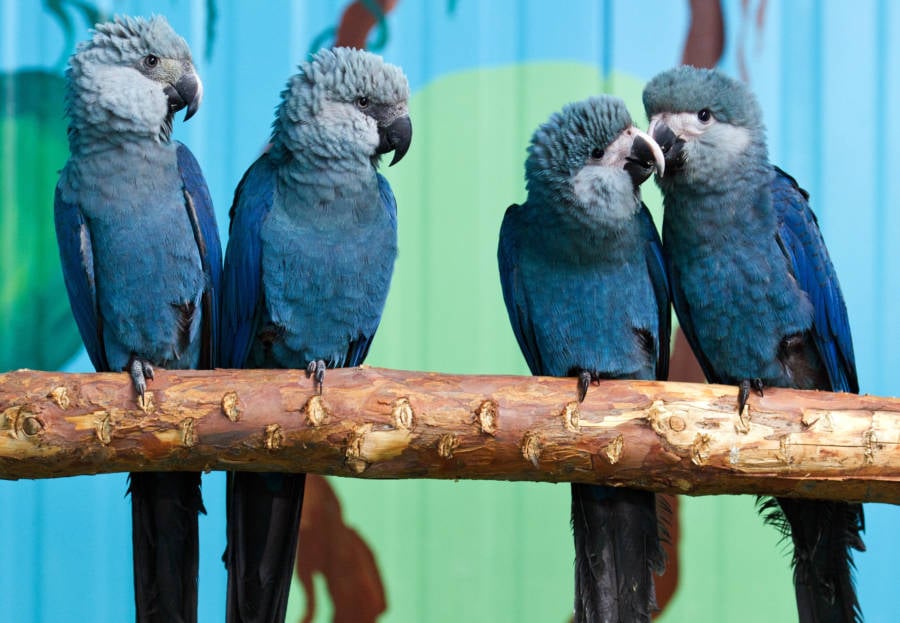
Current population size: 110 !
These exist in a preserve in Qatar, in the zoo of Berlin, a park in the Canary Islands, Brazil, Spain, and Belgium.
It's noteworthy that the IUCN regards this species as probably extinct in the wild, though still marked "Critically Endangered" on wikipedia.
However, as Planet Zoo wants to emphasise: zoos are here to help.
The Belgian zoo Pairi Daiza has signed an agreement with the Ministry of the Environment of Brazil (whose president wants to lesson restrictions on mining and cutting the Amazon rainforest) to breed and reintroduce these beautiful creatures into Brazil in 2021. Once again, zoos are coming to the rescue of sh*tty country leaders.
Critically Threatened (CT)

Among the smartest of land animals on the planet, sharing in 97% of the human genome. They can use tools, they teach their children skills, including which foods not to eat because they're poisonous. They can learn by watching humans. They can even communicate with incredulous levels of sign-language. At 9 months of age, a famous orangutan called Chantek, was already using words to express thoughts like "gimme-drink" and "food-eat". Human's at nine months can't do anything. At age 4, Chantek would improvise new words. He also learned how to lie. Recently a third species was discovered on the island of Sumatra. (P. tapanuliensis).

Subspecies variation in the Black R. is not settled; most accepted scheme considers 7-8 subspecies, 3 of which are extinct, 1 subspecies where there's believed to be only one surviving specimen alive.

The three-toed sloth differs from the two-toed sloth in having one more finger. Unlike its more fortunate subspecies cousins, it's critically endangered. Fun fact about sloths: it lives up in the trees for almost the entire time, venturing down onto the forest floor only once a week to poop. For the creatures below, this is called "the worst day of the week". Another fun fact: they move at a rate of about 1 meter per minute. This is an impressive 1m/min faster than a dead sloth.
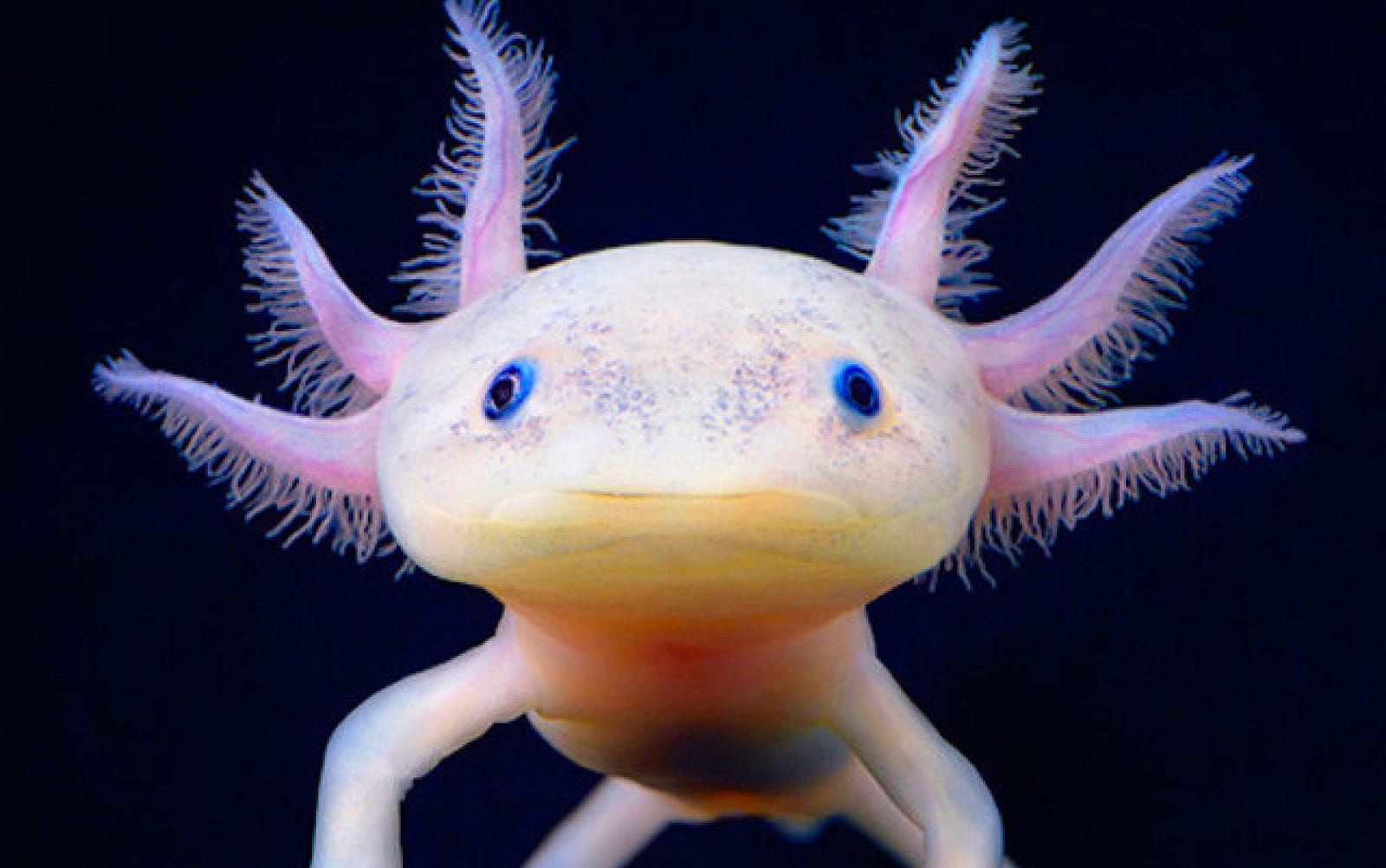
In 2010 these cute puppies were "near extinction" due to urbanisation in Mexico City. Because, the habitat of these wonderful freaks is but ye large:

Axolotl do not heal by scarring, and are capable of regeneration of entire lost appendages within months, and sometimes even more vital structures. Its genome is about ten times the size of the human genome.

We all spring from apes, though some of us humans didn't spring far enough, as the saying goes. But much can be said about gorillas. They are our closest living relatives, after chimpanzees and bonobos. Also considered highly intelligent animals. Example: Koko, who was taught a subset of sign language. It also learned how to lie. Gorillas have been shown to have cultures in different areas revolving around different methods of food preparation, and will show individual colour preferences. Isn't that neat?
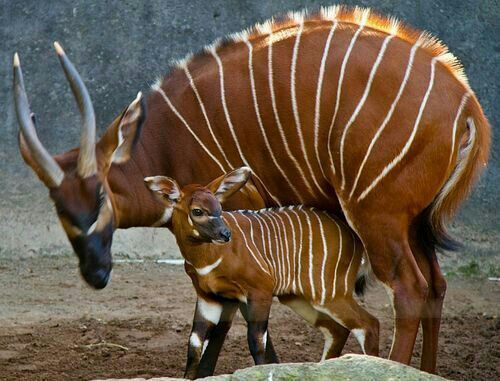
Not the musical instrument. Or that song by Manu Chao. Or that vehicle in the Star Wars movies. Both sexes have horns, and they have a complex social interactions. While the western or lowland bongo faces ongoing population decline, the eastern or mountain bongo is actually Critically Endangered, with more specimens in zoos than in the wild. Believed to be fewer than 100 of these creatures left in the wild due to logging and poaching.
Endangered (EN)
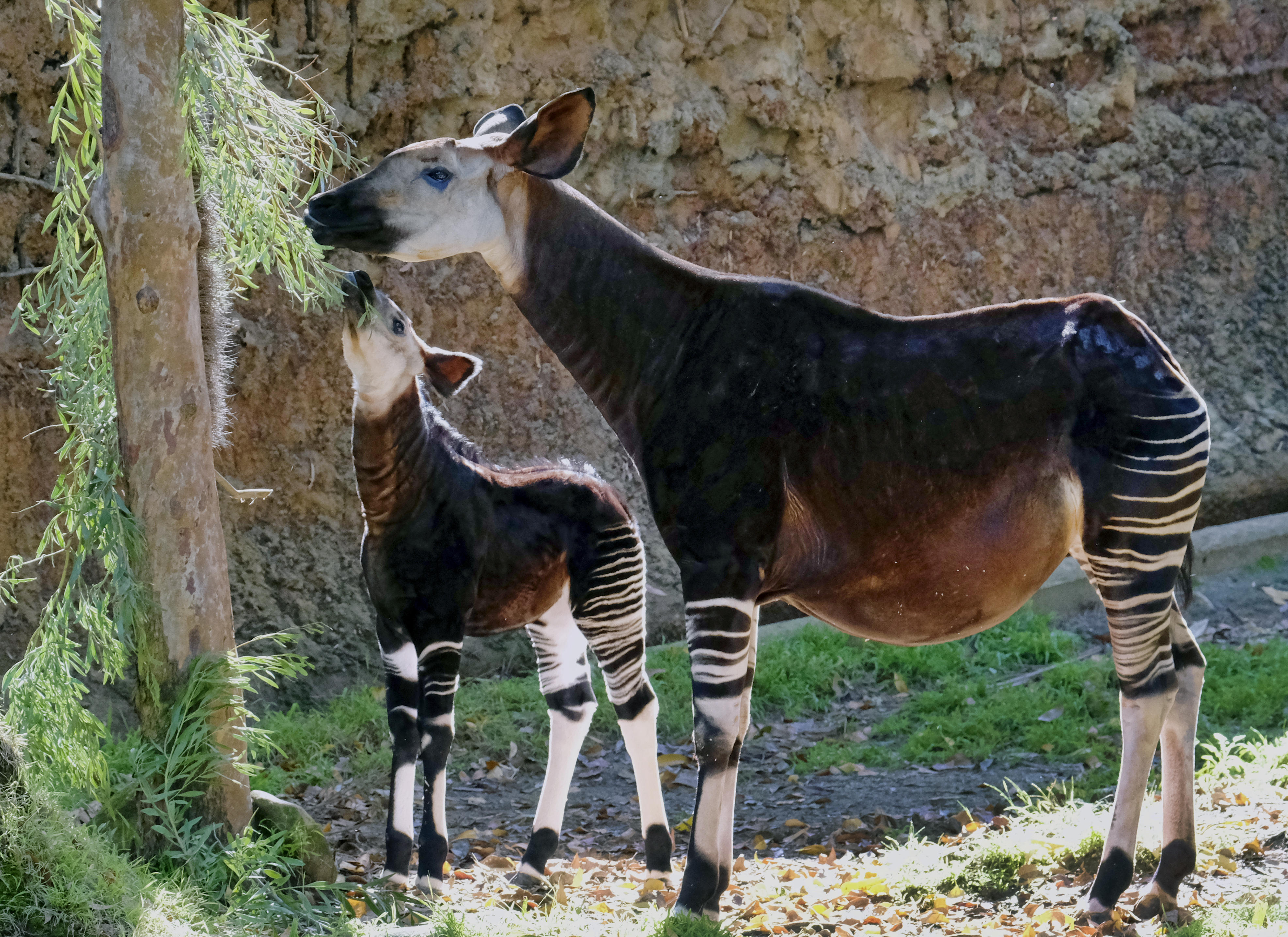
There is a steady decline in population numbers, due to logging, human settlement, and hunting for bushmeat. The Global studbook (ISB: working to ensure genetic diversity in captive population of endangered animals) is managed by Antwerp Zoo, which was the first to have an Okapi on display (still does).

The main threat to these wonderful creatures is once again, the inhuman species. Deforestation for agriculture, floods by damming rivers, illegal trade, and hunting for sport.

Once native to mainland Australia, now only found in the wild on the island of Tasmania. They're the largest carnivorous marsupial in the world following the extinction of the thylacine in 1936. Their scream is cute and hilarious. Ehh!!
At least we'd have an animal with a hole burrow in the game, though this might make security a problem. If it does: they also use dense bushes.

Also known as "your cousin Steve the guitar-playing surfer who's stuck with his 2000's hairstyle and refuses to get a job". 90% of their population since the '50s has gone.
Vulnerable (VU)
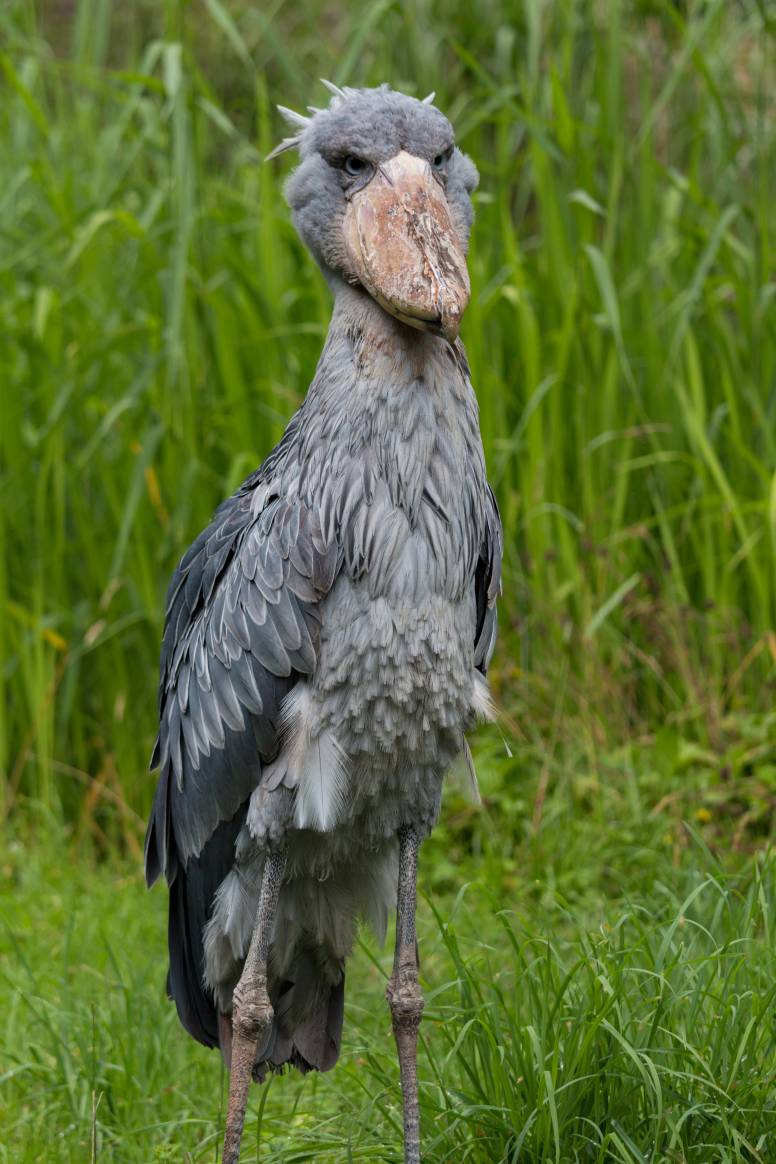
It's a grumpy looking dinosaur and you don't want to mess with it. Population: 5-8000.
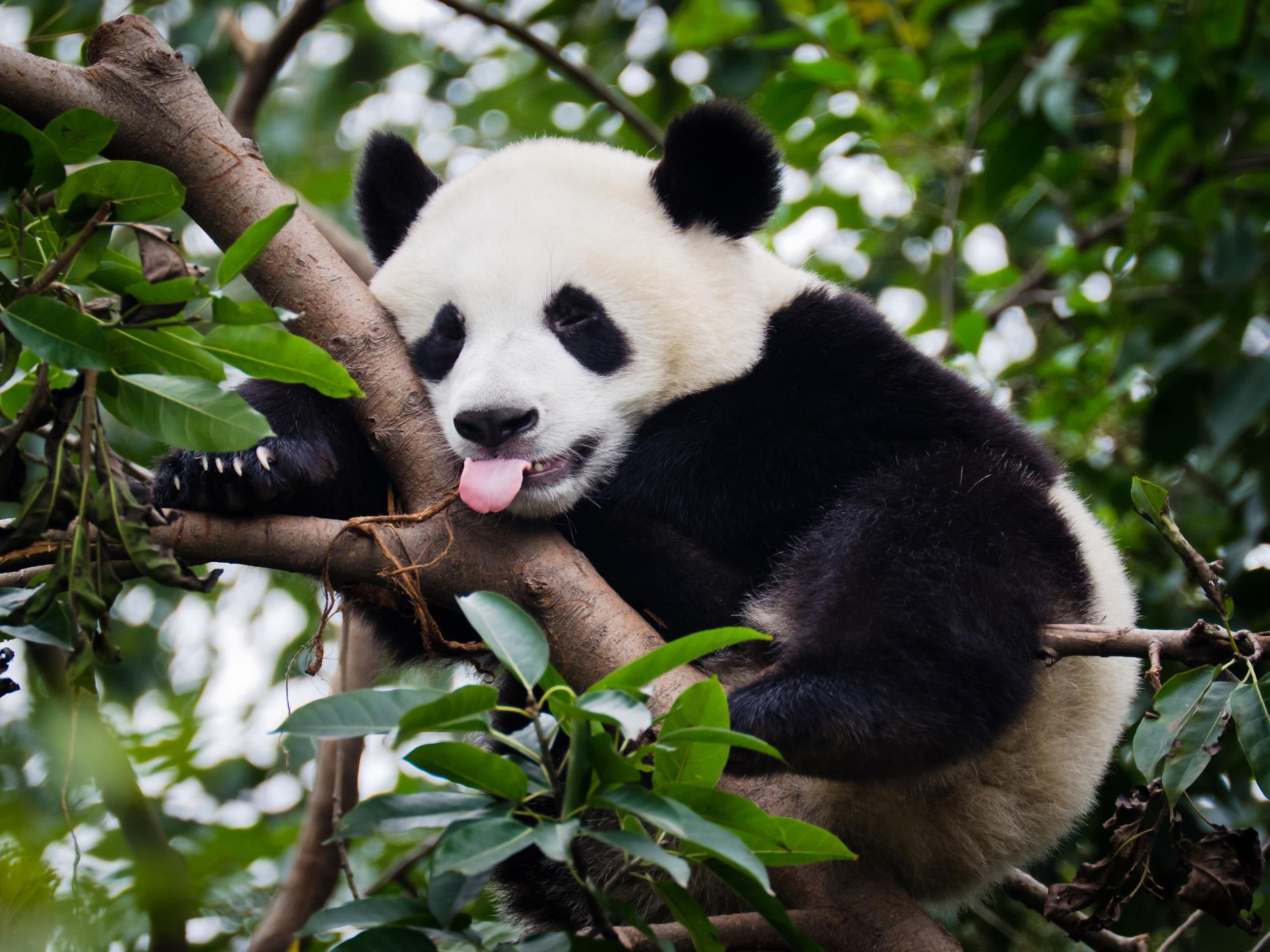
Their absolute unwillingness and incredibly stupid and impossibly short fertility-span makes me wonder how it is that these teddybears didn't die out before humans came along. They're also all the Chinese government's property, as all of their habitat falls within China. All panda's are basically on-lease by the Chinese government. I've visited the panda breeding centre in Chengdu. They're beautifully useless creatures. They've been around for two or three million years already. If you ever feel stressed, think about the Panda. They don't do sh*t and they haven't gone extinct. You can afford to take a nap.

They can carry chlamydia, apparently have a very loose buttocks, and sleep up to 22 hours per day. Sound familiar?
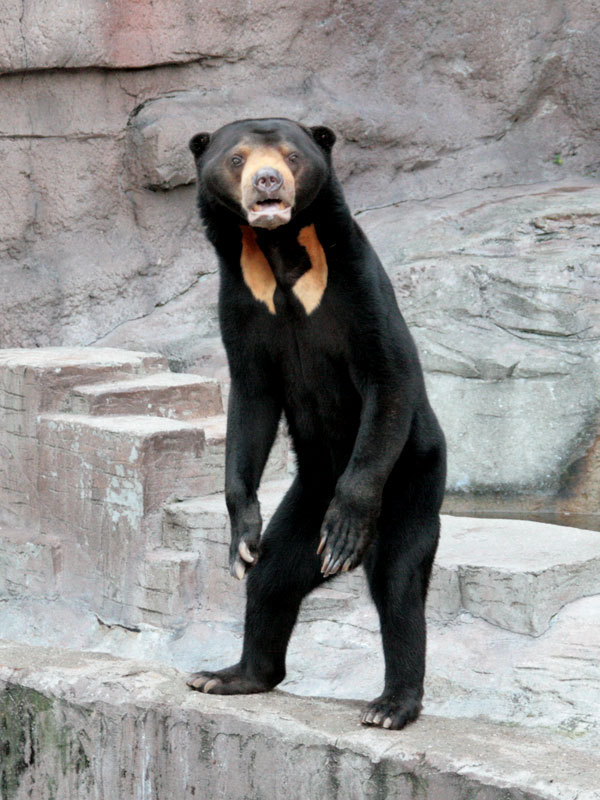
They look like men wearing a bear-suit, but they're real, i swear.

Also called possum on the half-shell in the Southern USA, they can carry leprosy.

They look like a hairbrush with legs, and have a 50cm long tongue (ladies ;] ).
Also claws larger than the claw of the Dionychus (the Velocireptor dinos in Jurassic Park). They can clear out an entire termite colony in one meal.

The bad guys in Madagascar, the movie.

If his default name isn't 'Rafiki', I will be mad.

Largest land carnivores in existence.
Not Threatened (NT) to extinction: still massive population declines.

The maned wolf is not closely related to any other living canid (fox, wolf, dog, coyote, ... ). It is a distinct canid, believed to be the sole survivor of the South American canids since the late Pleistocene extinction. It is unique. Scientists agree it has legs for days.
Least concern (LC)
Though the title "largest living rodent" might sound yucky, it is in fact a very un-yucky animal. It is a highly social species and can be found in groups as large as 100 individuals, though usually 10-20. It is hunted for meat, hide, grease.
It peacefully co-exists with just about any living creature on earth, probably.
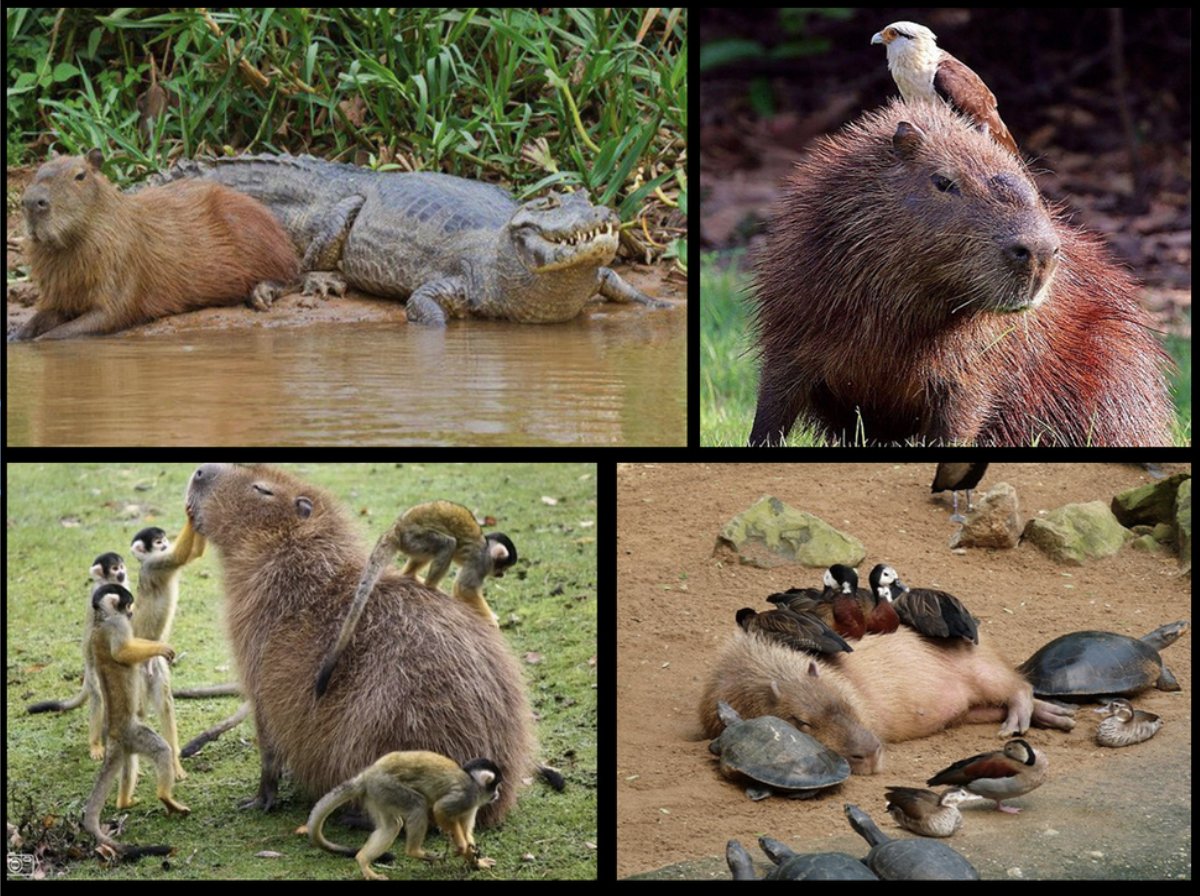
Your game needs it. Do it. Please.

Camouflaged triceratops. Chameleon comes from the Greek meaning "ground lion". I don't know much about chameleons. Sorry.

They form open-membership groups, averaging three individuals. They have a dominance hierarchy for food and shade. They usually are not territorial. The female kangaroo is usually permanently pregnant, except on the day she gives birth (says wikipedia. Don't ask me.)
A scenery / theme idea: South-East-Asian
Think: Laos, Cambodia, Thailand
In Pairi Daiza, a zoo i once mentioned before, there are thematic zones. One of them is South-East-Asia. Animals such as tigers, orangutans, elephants, Macaque, water buffalo, Komodo Dragon, and others are cared for here. A few photos:
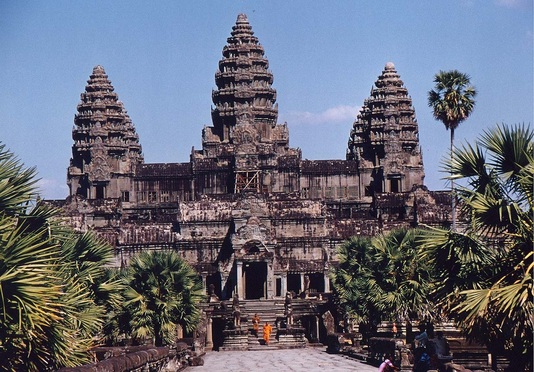






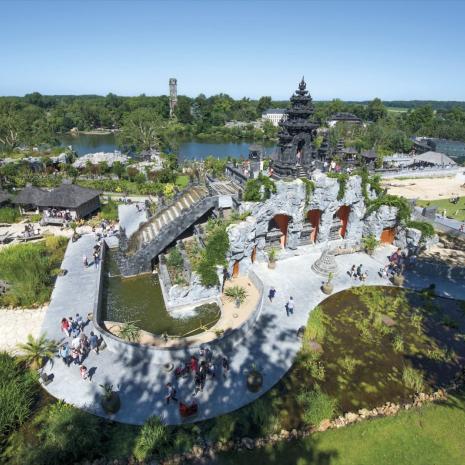
A scenery / theme idea: Asian
Think: China, Japan
Again, from the same zoo, an Eastern themed section. Here are the pandas, the Snow Leopards, red pandas, Chinese alligator, Goral, Koi, Gibbon, Crane, Indian Muntjac, Golden Takin, etc.



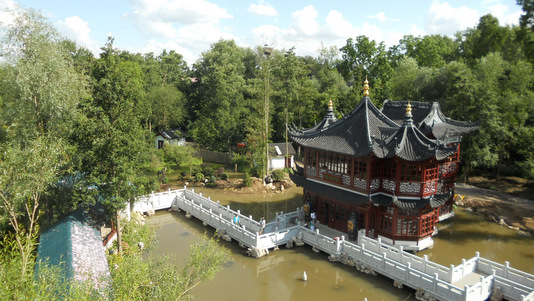
Disclaimer: I do not work for or seek to promote the Pairi Daiza zoo. It's just an amazing zoo that's close to me, and the Zoo-Tycoon-playing kid inside of me is in love with this place. It is also a nice example of a zoo that didn't grow organically or historically, but is precisely thematically planned and laid out, much like how one would make a park in Planet Zoo. I strongly urge the devs to check this zoo out, as it's been voted the best zoo in all of Europe several years running now. It's also got the largest elephant population on the continent, all the big carnivores and herbivores, and is twice the size of San Diego zoo, with more species, and more animals. It's only 25 years old and thus not famous yet. It also leads several programs on preserving nearly-extinct animals, breeding elephants, and reintroducing several species back into the wild. Ignoring it would be a mistake in my opinion.
I already love this game and I look forward to seeing it released. Whatever happens, this game is already a 10/10 for me. Thanks for your time.
This is a long post, bear with me.
Animals
Here's a few animals that would fit rather well in the game. I don't think they're anything like the ones that have been shown so far, they're pretty distinct. They're also almost all endangered, critically endangered, or even extinct in the wild. Most of them are not-Savannah biome, since we've already been spoiled with a few of those. I've included the general habitat of the animals for the developers, so that they might see that these are some fine possible additions to the game that aren't "just more Savannah animals".
I've added some additional info for each species, informative but also some bad references and jokes.
Ranked in terms of endangered-level:
Extinct in the Wild (EW)
- Père David's deer (or: 麋鹿; pinyin: mílù ): Wetlands

Since the game so far lacks some antlered creatures (though we have horned ones). These are creatures that used to live in the river valleys of China, went extinct due to hunting and land reclamation in 1939. The 11th Duke of Bedford acquired a few of the last deer from European zoos for a private herd at his home. The great-grand child of the Duke reintroduced two herds to China. Also three (3!!) creatures from the Berlin Zoo created the current population of 5000. Current wild population in China is now back to over several thousands.
- Spix's macaw: dry scrub zone ('caatinga')

Current population size: 110 !
These exist in a preserve in Qatar, in the zoo of Berlin, a park in the Canary Islands, Brazil, Spain, and Belgium.
It's noteworthy that the IUCN regards this species as probably extinct in the wild, though still marked "Critically Endangered" on wikipedia.
However, as Planet Zoo wants to emphasise: zoos are here to help.
The Belgian zoo Pairi Daiza has signed an agreement with the Ministry of the Environment of Brazil (whose president wants to lesson restrictions on mining and cutting the Amazon rainforest) to breed and reintroduce these beautiful creatures into Brazil in 2021. Once again, zoos are coming to the rescue of sh*tty country leaders.
Critically Threatened (CT)
- Orangutan: Rainforest

Among the smartest of land animals on the planet, sharing in 97% of the human genome. They can use tools, they teach their children skills, including which foods not to eat because they're poisonous. They can learn by watching humans. They can even communicate with incredulous levels of sign-language. At 9 months of age, a famous orangutan called Chantek, was already using words to express thoughts like "gimme-drink" and "food-eat". Human's at nine months can't do anything. At age 4, Chantek would improvise new words. He also learned how to lie. Recently a third species was discovered on the island of Sumatra. (P. tapanuliensis).
- Black Rhinoceros: Savannah

Subspecies variation in the Black R. is not settled; most accepted scheme considers 7-8 subspecies, 3 of which are extinct, 1 subspecies where there's believed to be only one surviving specimen alive.
- pygmy three-toed sloth: Rainforest

The three-toed sloth differs from the two-toed sloth in having one more finger. Unlike its more fortunate subspecies cousins, it's critically endangered. Fun fact about sloths: it lives up in the trees for almost the entire time, venturing down onto the forest floor only once a week to poop. For the creatures below, this is called "the worst day of the week". Another fun fact: they move at a rate of about 1 meter per minute. This is an impressive 1m/min faster than a dead sloth.
- Axolotl: Lake Xochimilco in Mexico City. That's literally it.

In 2010 these cute puppies were "near extinction" due to urbanisation in Mexico City. Because, the habitat of these wonderful freaks is but ye large:

Axolotl do not heal by scarring, and are capable of regeneration of entire lost appendages within months, and sometimes even more vital structures. Its genome is about ten times the size of the human genome.
- Gorilla: tropical forests.

We all spring from apes, though some of us humans didn't spring far enough, as the saying goes. But much can be said about gorillas. They are our closest living relatives, after chimpanzees and bonobos. Also considered highly intelligent animals. Example: Koko, who was taught a subset of sign language. It also learned how to lie. Gorillas have been shown to have cultures in different areas revolving around different methods of food preparation, and will show individual colour preferences. Isn't that neat?
- Bongo: tropical jungles.

Not the musical instrument. Or that song by Manu Chao. Or that vehicle in the Star Wars movies. Both sexes have horns, and they have a complex social interactions. While the western or lowland bongo faces ongoing population decline, the eastern or mountain bongo is actually Critically Endangered, with more specimens in zoos than in the wild. Believed to be fewer than 100 of these creatures left in the wild due to logging and poaching.
Endangered (EN)
- Okapi: tropical forests

There is a steady decline in population numbers, due to logging, human settlement, and hunting for bushmeat. The Global studbook (ISB: working to ensure genetic diversity in captive population of endangered animals) is managed by Antwerp Zoo, which was the first to have an Okapi on display (still does).
- Malayan tapir: lowland rainforests

The main threat to these wonderful creatures is once again, the inhuman species. Deforestation for agriculture, floods by damming rivers, illegal trade, and hunting for sport.
- Tasmanian Devil: temperate scrublands and forests

Once native to mainland Australia, now only found in the wild on the island of Tasmania. They're the largest carnivorous marsupial in the world following the extinction of the thylacine in 1936. Their scream is cute and hilarious. Ehh!!
At least we'd have an animal with a hole burrow in the game, though this might make security a problem. If it does: they also use dense bushes.
- Northern Rockhopper Penguin: rocky cliffs, vulcanic islands. Humid subtropical or wet oceanic climate. (??)

Also known as "your cousin Steve the guitar-playing surfer who's stuck with his 2000's hairstyle and refuses to get a job". 90% of their population since the '50s has gone.
Vulnerable (VU)
- Shoebill: wetlands, swamps, marshes

It's a grumpy looking dinosaur and you don't want to mess with it. Population: 5-8000.
- panda: bamboo forests

Their absolute unwillingness and incredibly stupid and impossibly short fertility-span makes me wonder how it is that these teddybears didn't die out before humans came along. They're also all the Chinese government's property, as all of their habitat falls within China. All panda's are basically on-lease by the Chinese government. I've visited the panda breeding centre in Chengdu. They're beautifully useless creatures. They've been around for two or three million years already. If you ever feel stressed, think about the Panda. They don't do sh*t and they haven't gone extinct. You can afford to take a nap.
- Koala: Bushland & inland woodlands

They can carry chlamydia, apparently have a very loose buttocks, and sleep up to 22 hours per day. Sound familiar?
- Sun Bear: wetlands, swamp, tropical rainforest, montane forest.

They look like men wearing a bear-suit, but they're real, i swear.
- Giant Armadillo: tropical forests, as well as savannas, floodplains, ...

Also called possum on the half-shell in the Southern USA, they can carry leprosy.
- Giant Anteater: grassland and rainforests.

They look like a hairbrush with legs, and have a 50cm long tongue (ladies ;] ).
Also claws larger than the claw of the Dionychus (the Velocireptor dinos in Jurassic Park). They can clear out an entire termite colony in one meal.
- Fossa: deciduous forests, eastern rainforests, spiny forests

The bad guys in Madagascar, the movie.
- Mandrill: tropical rainforest

If his default name isn't 'Rafiki', I will be mad.
- Polar Bear: Arctic Circle.

Largest land carnivores in existence.
Not Threatened (NT) to extinction: still massive population declines.
- Maned Wolf: grasslands, scrub forests.

The maned wolf is not closely related to any other living canid (fox, wolf, dog, coyote, ... ). It is a distinct canid, believed to be the sole survivor of the South American canids since the late Pleistocene extinction. It is unique. Scientists agree it has legs for days.
Least concern (LC)
- Capybara: semi-aquatic, savannas, rain forests, lakes.

Though the title "largest living rodent" might sound yucky, it is in fact a very un-yucky animal. It is a highly social species and can be found in groups as large as 100 individuals, though usually 10-20. It is hunted for meat, hide, grease.
It peacefully co-exists with just about any living creature on earth, probably.

Your game needs it. Do it. Please.
- Jackson's Chameleon: Rainforest

Camouflaged triceratops. Chameleon comes from the Greek meaning "ground lion". I don't know much about chameleons. Sorry.
- Eastern Grey Kangaroo: open grasslands with bush, woodlands, sub-tropical forests, inland scrubs, mountain forests.

They form open-membership groups, averaging three individuals. They have a dominance hierarchy for food and shade. They usually are not territorial. The female kangaroo is usually permanently pregnant, except on the day she gives birth (says wikipedia. Don't ask me.)
A scenery / theme idea: South-East-Asian
Think: Laos, Cambodia, Thailand
In Pairi Daiza, a zoo i once mentioned before, there are thematic zones. One of them is South-East-Asia. Animals such as tigers, orangutans, elephants, Macaque, water buffalo, Komodo Dragon, and others are cared for here. A few photos:








A scenery / theme idea: Asian
Think: China, Japan
Again, from the same zoo, an Eastern themed section. Here are the pandas, the Snow Leopards, red pandas, Chinese alligator, Goral, Koi, Gibbon, Crane, Indian Muntjac, Golden Takin, etc.



Disclaimer: I do not work for or seek to promote the Pairi Daiza zoo. It's just an amazing zoo that's close to me, and the Zoo-Tycoon-playing kid inside of me is in love with this place. It is also a nice example of a zoo that didn't grow organically or historically, but is precisely thematically planned and laid out, much like how one would make a park in Planet Zoo. I strongly urge the devs to check this zoo out, as it's been voted the best zoo in all of Europe several years running now. It's also got the largest elephant population on the continent, all the big carnivores and herbivores, and is twice the size of San Diego zoo, with more species, and more animals. It's only 25 years old and thus not famous yet. It also leads several programs on preserving nearly-extinct animals, breeding elephants, and reintroducing several species back into the wild. Ignoring it would be a mistake in my opinion.
I already love this game and I look forward to seeing it released. Whatever happens, this game is already a 10/10 for me. Thanks for your time.
